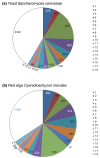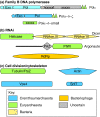The origin and early evolution of eukaryotes in the light of phylogenomics
- PMID: 20441612
- PMCID: PMC2898073
- DOI: 10.1186/gb-2010-11-5-209
The origin and early evolution of eukaryotes in the light of phylogenomics
Abstract
Phylogenomics of eukaryote supergroups suggest a highly complex last common ancestor of eukaryotes and a key role of mitochondrial endosymbiosis in the origin of eukaryotes.
Figures






References
Publication types
MeSH terms
Grants and funding
LinkOut - more resources
Full Text Sources

